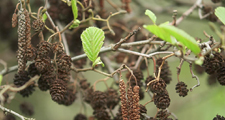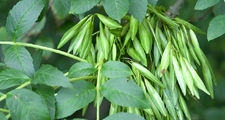Alder Ash Woodland – W7
Alnus glutinosa – Fraxinus Excelsior – Lysimachia nemorum woodland
Region
Scattered distribution across the north and west of the county. North Pennines, Coalfield Pennine Fringe, Pennine Dales Fringe, Wear Lowlands
Character
Alder & Ash stands on flushed slopes within other woodlands. Typical of the lower slopes of upland ravine ash woods and oak woods.
Geology
Carboniferous Limestones, Millstone Grits, Coal Measures.
Soils
Flushed mineral soils. Moderately base rich & mesotrophic.
Species
Common Alder, Ash, Downy Birch. If not grazed there may be an understorey including Goat Willow, Grey Willow, Hazel, Hawthorn, Rowan & Bird Cherry.
Ground Flora and Fauna
Yellow Pimpernel, Creeping Buttercup, Opposite-leaved Golden-saxifrage, Soft Rush, Tufted Hair-grass.
Structure
Open stands often dominated by Alder with an understorey of Hazel, thorn and sallow. Often modified by grazing or coppicing.
Management Principles
- Prevent grazing by livestock – and particularly in small woods.
- Maintain and increase the numbers of old trees and dead wood.
- Progressively remove non-natives at a pace flora & fauna can adapt to.
- Low intervention approaches are usually best although timber production may be an option on drier sites carrying better quality Ash.
- Restore coppicing only where its history is well established and the effects on existing flora & fauna are understood.
- Use low-key establishment techniques – particularly natural regeneration.
- When planting is necessary use only native species of local origins
- Maintain areas of open ground.
Planting Sites for New Woods
Lower valley slopes & flushes within other woodland types in the uplands and upland fringes. Avoid areas where existing vegetation has a conservation value.
Design Principles
Strongly related to topography and drainage. Planting mixtures should be dominated by Alder on wetter sites. On drier sites a higher proportion of Ash and a greater diversity of shrub species may be appropriate.
Further Information
Forestry Commission Forestry Practice Guide 8: Wet Woodlands, Guide 4 Upland Mixed Ashwoods can be downloaded from Forestry Commissions Publications pages.



